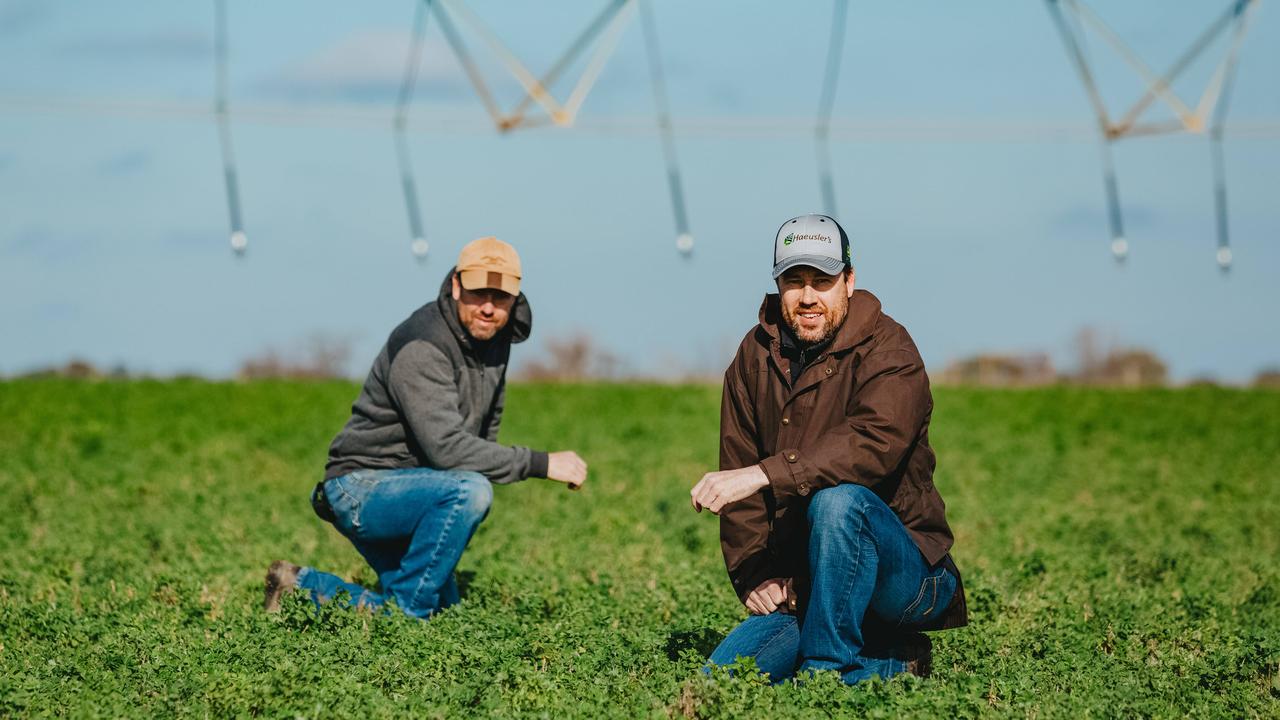Lupins for Life: Cropping family puts lupins on Aussie dining tables
THIS Riverina cropping family is putting albus lupins on the menu for health-conscious consumers. SUE WALLACE reports.
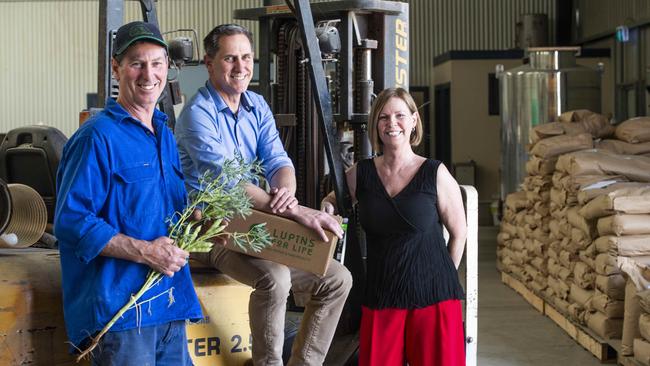
WHAT started as a dream is finally becoming a reality for Gary Drew and his family, as demand for their healthy lupin products expands.
The third-generation farmer runs a mixed farming business west of Brocklesby near Albury, in the southern Riverina of NSW.
Gary and his wife, Heather, rear Merino sheep and grow wheat, canola and albus lupin, which they originally planted for crop rotation with faba beans and field peas.

It was three years ago that Gary decided to throw resource and effort into developing products for human consumption from their albus (white) lupins, promoting the crop’s health benefits.
Lupin is the largest pulse crop grown across Australia, with the majority produced for forage or as a green crop.
Gary always thought the albus lupin would be best suited for human consumption but what really propelled his decision was when he was delivering a load of the legumes to a mate.
“I pulled back the tarp from a load of steamed and rolled lupin that I was dropping off and the aroma from it was amazing and the sight of the golden lupins looked so delicious that I just thought why aren’t people eating this?” Gary says.
So, he and Heather founded Lupins for Life as a separate enterprise to their farm, and enticed Gary’s brother, Roger, and sister, Chris Johnston, to come on board and run the factory, at Jindera.
“Roger and Chris both returned home as they saw the potential in the venture and it is very satisfying to see how far they have taken the business in a short time,” Gary says.
Roger, who left the family farm 26 years ago, returned to the country and is now the managing director of Lupins for Life. Chris has a background in human resources and is a director and business operations manager of the venture.

Lessons from the west
Over the years, Gary has paid attention to Western Australia’s efforts to create lupin products.
“WA is the biggest producer of lupins in the world and there has been lots of research and trials … but most of it is still exported as livestock feed,” he says.
“I always hoped things would work and they would showcase what you could do with lupin but it didn’t eventuate, which was disappointing considering the money and effort that went into all the research and trials.
“In reality, their choice of lupin variety has been their biggest hurdle. WA use only angustifolious lupins for their products. Our albus lupins are superior in nutrition and a much better taste. In the end, it has to taste great.”
The entire harvest from Gary and Heather’s 100-hectare crop of albus lupins go into Lupins for Life products, for human consumption.
The business produces flour, crumbs, kibble, semolina and the world’s first toasted protein
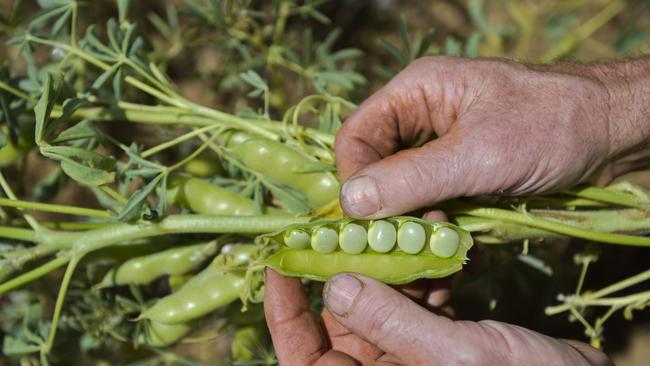
flakes, all of which can be ordered online.
The nine-step production process is wholly done within their Jindera factory and Roger has spent two years trialling and developing the range.
Gary says they have come a long way since the day Roger joined him to kick off the venture.
“Roger walked in, sat down and started with a pen and paper and got to work,” Gary says. “It was like going down a rabbit hole as it was all so new.”
What impressed Roger most about the crop’s potential was the health benefits.
“It’s low in carbs, salt and fat, has low GI, is gluten-free, contains minimal starch and has been shown to lower blood pressure and cholesterol, and improve insulin sensitivity,” Roger says. “In general, the products are 43 per cent protein and 30 per cent fibre, much better than quinoa and chia and nowhere near the price to grow.
“Nutritionally it’s through the roof when compared to other grains and is one of the most versatile foods and is great for gut health and weight loss.”
Gary says he is living proof of the health credentials — he lost 10kg when he started including the lupin flakes in his breakfast.
Roger also believes the legumes could prove valuable in Third World countries where famine and malnutrition are rife.

He says the products are traceable to each planting to ensure consumers only receive the best.
“Gary was so thrilled after a high-protein bread manufacturer started using our lupin flour, and when he saw the product appearing on restaurant menus in Melbourne’s Lygon Street, it was very exciting,” Roger says.
The siblings are proud that they have worked in partnership with the Department of Primary Industries for 20 years, facilitating ongoing legume trials.
Luxor and Rosetta are two standout varieties that have been developed through trials. Both are bred to eliminate the bitterness common in other lupin varieties.
“Luxor and Rosetta are 100 per cent sweet seeded,” Roger says, “making them ideal for our palette and perfect for inclusion in both sweet and savoury dishes.”
Inherent risks
Roger is the first to admit they have taken risks in starting the venture.
“Some have paid off and others haven’t,” he says.
Over two years, Gary, Roger and Christine have invested in machinery — much of it designed for other purposes, and often sight unseen.
“Most of it had to be adapted to what we wanted but it was a good price and we thought we could work with it and after lots of trial and error, we’ve overcome all the challenges that others said could not be done,” Roger says. “It was all about not outlaying too much on equipment but seeing the potential to adapt the machinery to what we wanted.”
Despite difficulties, they are determined to see white lupin given the recognition it deserves as a health food.

Strong start
They say response to the products has been encouraging.
Customers ask how to cook the products so Gary’s wife, Heather, is in charge of developing recipes.
Citrus coconut muffins, lemon lupin balls and Turkish zucchini fritters are just a few featured on Lupins for Life’s website.
“It is very much a family hands-on business and even our parents often help out at the mill as well,” Roger says. “We work well as a team — Gary is right out the front with his creativity, research and willingness to try things. Chris is a business operations machine and I have found my niche in the business perspective and can see what needs to be done to pull it together.”
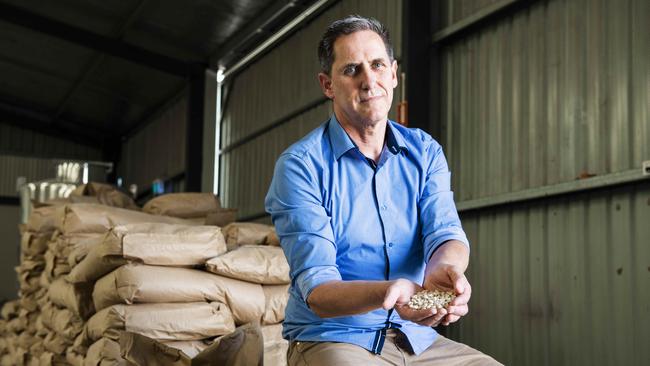
The Drew family crops about 1200 hectares of wheat, canola and lupins as well as running 1500 Merino ewes but they are determined to see their lupins project succeed. Gary describes the venture as a project he can’t let go of.
“It should be pursued,” he says. “It’s exciting and at times frustrating and it has been staring us in the face all the time.”
Eventually they hope other like-minded farmers will supply lupins as the business grows.
“We are passionate about what we do and we will eventually support others who feel the same way,” he says. “Lupin is just such an under-utilised food source that should be explored to its full potential.
“This isn’t just an add-on business to a farming enterprise, but it’s a stand-alone business with a bigger vision — a bit like marriage.
“You think you know what you’re getting yourself into, but you can’t be sure until you start.”
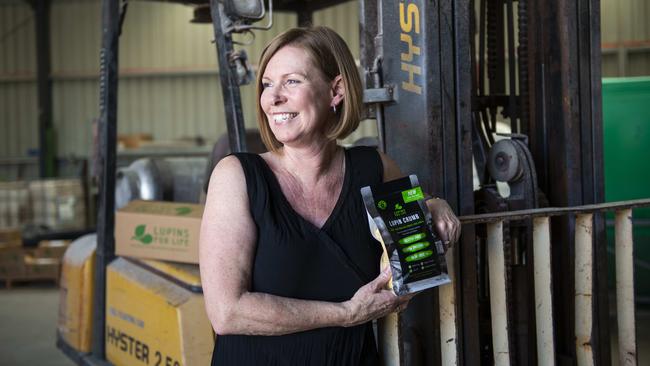
FARM FILE
Lupins for life
Gary Drew grows albus lupin on 100 hectares of the mixed property he runs with his wife, Heather, at Brocklesby, west of Albury. Gary and his brother, Roger, and sister, Christine Johnston, run Lupins for Life, processing all of the Drew family’s lupins into products including flour, flakes and kibble. The products sell in 400g packets for about $10 each online and through local grocery and health food shops.
Where: Brocklesby and Jindera, NSW
More info: lupinsforlife.com.au
OUTBACK HARVEST STRIKES GOLD WITH TEFF
KINDRED ORGANICS: PIONEERS OF QUINOA KEEPING THE CRAZE ALIVE


